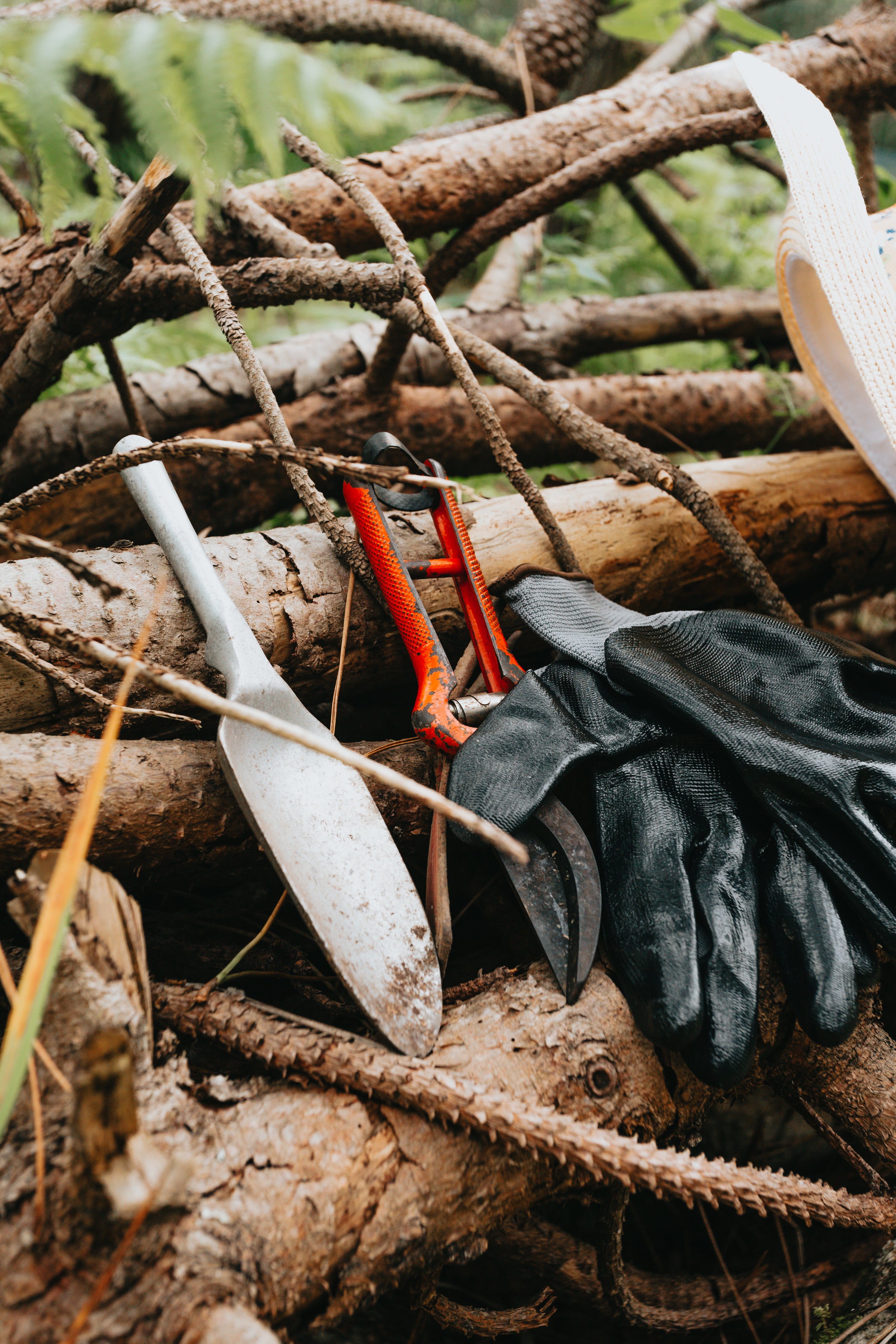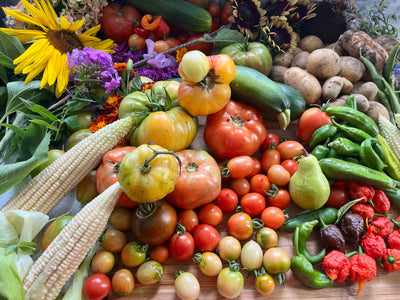Survival gardening is practically a rite of passage for anyone who wants to practice self-sustainability; after all, people have been growing their own food since the beginning of time. But that doesn't mean gardening doesn't come with its share of challenges and problems. The hard part is staying consistent and exercising patience to overcome those obstacles.
We made it as easy as possible by identifying some common issues with survival gardening and how to fix them. And once you know how to navigate your gardening problems, you'll build up your knowledge base and know what to do next time.
Your Backyard Is Too Small
Size can be a factor if you're longing to grow a survival garden but are short on outdoor space. In reality, a survival garden can grow on even limited land (or none at all). If space is a serious issue, you can still find creative solutions to help you grow your own food.
Assess the land you have and where you'll get the most morning light and afternoon shade. You can also grow a garden in elevated planters and containers, vertically, and in window boxes, to name a few places. Of course, you'll have to consider which plants will grow best in limited space. Tomatoes are voracious climbers and do well in vertical planters. Herbs and broccoli also do well in smaller areas.
It's also possible to start a survival garden from an apartment, especially if you can use a balcony. Use containers, window boxes, and indoor vertical planters to make the most of your sunlight. In a pinch, you can also look into indoor growing lights to help grow plants in darker rooms.
You Have Poor Soil Quality
Healthy, loose soil is the cornerstone of a successful survival garden. Slow-growing crops or dying vegetables often point to soil problems lacking nutrients and organic matter. You can improve soil quality with the help of mulch, organic compost, and vermiculture. A pH soil test will also reveal what your plants might be missing.
Adding some compost or organic fertilizers helps restore your soil quality and improve your garden's growth. Avoid harsh chemicals and pesticides, or you could damage your soil and health.
Soil amendments help turn around your soil quality and promote better growth. Start with Myco Lighting, a Mycorrhizal Fungi essential to the health of your plants that increases the available surface of your plant's root systems to maximize nutrients and water absorption. Or reach from some Azomite Micronized Powder, a micronized volcanic dust with earth minerals called lanthanides. When consumed by soil microorganisms, it increases the CEC of the soil and helps your plants thrive.
Your Survival Garden is Under of Over-Fertilized
Under-fertilized gardens often have pale and yellowing leaves or slow growth. Your soil probably lacks the proper nutrients for healthy leaves and blossoms to develop. The fix is simple–add more organic matter and natural fertilizers to revitalize your garden.
When it comes to even the best fertilizers on the market, you can have too much of a good thing. Over-fertilized plants are also slow-growing or may stop growing entirely. The overabundance of fertilizers could cause root damage and keep your plants from absorbing nutrients. Wilted or dry leaves are also signs of over-fertilized plants.
There are a few things you can do to combat an over-fertilized garden. Do your best to scrape off any excess fertilizers from the soil's surface and water your plants thoroughly to get off any salt. If the fertilizer is thoroughly mixed into the ground, try replanting in fresh soil.
Your Plants Are Getting Too Much or Too Little Sun
Morning sunlight and afternoon shade is best for your garden but isn't always possible. The results are too much or too little sun that quickly derail your survival gardening efforts. Here are some of the symptoms of too much sun:
- Plants or their leaves look washed out and bleached
- Leaves look burned and blotchy or appear white, yellow, or brown
- Leaves feel crispy and stiff or crumble
Here are some of the signs of too little sunlight:
- Stretched-out stems reaching for the light
- Yellow leaves
- Brown edges
- Dropping leaves
- Thin and small leaves
If you can mix things up, try planting your survival garden in areas with the best morning light and shady patches during intense afternoon hours. A sunshade can also help shield your garden from getting too sun-drenched. If you need more sun, try pruning surrounding trees or bushes. If there's not much you can do about your sunlight, opt for shade-tolerant vegetables, including leafy greens, root veggies, and herbs.
Your Garden Pests Are Out of Control
Pests are an unfortunate problem with survival gardening. There's a long list of pests to watch out for, including Japanese beetles, red spider mites, slugs, stink bugs, and aphids. They wreak havoc and quickly eat your plants and invade the soil.
Introducing good pests, like ladybugs, can help. Attracting more birds and installing bat houses nurture the wildlife you need to eliminate some of your pests. If you're not having much luck, planting pest-resistant varieties could also help. Some plants are less attractive to pests, including chives, okra, peppers, and rhubarb.
Everything is Wilting
Wilting plants and leaves are never a welcome sight and could point to a few different issues. Roots that don't get enough moisture into their stems will wilt. But so will plants living in water-logged soil. Either way, the issue is about moisture.
Do a touch test to see if your soil is damp or dry as a bone. Loosening up the dirt and adding some organic fertilizer may help freshen up the soil and adequately distribute the moisture.
Beyond the right moisture, you may also need to use some fungicides in case you have some root damage. Moving your plant to a shady area, even if they thrive in full light, could also help revive them.
Your Plants Have Blossom End Rot
When you're working diligently to grow your own food, it's always heartbreaking to see blossom end rot. The issue is commonplace with tomatoes, and the telltale sales include dark, rotting spots on the bottom of your fruit. There are a few ways to address the issue, and you'll need to experiment with what works best:
- Water your plants more often if you haven't been doing it frequently
- Test the calcium levels of your soil
- Use a fertilizer with calcium in it
In most situations, too little water is the culprit for blossom end rot. But overwatering can also ruin your plants, so take things slow and steady as you work through the issue.
Your Plants Aren't Growing
There are many reasons your plants aren't growing, including planting them in poor light or not using healthy soil. The next step is figuring out your watering and determining if pests are attacking your plants. Once you've ruled out these potential issues, consider whether or not you're growing the right plants in the correct hardiness zone.
Hardiness zones are climates that give an idea of what plants will grow in different areas. Some plants, like carrots, can easily grow in cold to warm temperatures, while fruits and melons usually need warmer conditions.
If everything checks out with your hardiness zone, the issue could be your seeds. If your seeds aren't germinating, even after proper sunlight and watering, they could have gone bad or were never viable from the start. It's essential to invest in quality seeds from a reputable supplier.
SeedArmory only sells 100% non-GMO, 100% heirloom, 100% open-pollinated seeds with the longest-lasting potential with a 25-year shelf stable. They're also heat sealed and with resealable mylar to protect your seeds and extend their lifespan.
You're Weary About the Ongoing Expense
Survival gardening shouldn't be an expensive endeavor, but it does take some start-up costs to get things moving along. The good news is there are always ways around most of your expenses, including asking around for leftover soil or gardening containers.
Asking your community Facebook group if anyone has old gardening gloves or tools may turn up a few supplies, and fellow gardeners may be willing to share some seeds. Discount retailers like the Dollar Store also have basic gardening supplies during spring and summer, including planters, gloves, and soil. But you can also use EBT or SNAP benefits to buy seeds and start growing your survival garden. Learn where you can buy seeds with EBT online.
Next Steps
Survival gardening problems are just part of the journey and don't need to derail your efforts. You need a new strategy with healthy soil, seeds, and tools to help you see the results you're looking for. Start browsing our selection of survival-grade seed vaults, bat houses, tools, and soil amendments for a thriving survival garden.











